On this page
Rear overhang
A vehicle’s rear overhang (ROH) is the distance between the vehicle’s rear and its rear overhang line.
Note: A reference to a vehicle is taken to include the vehicle together with its load, unless otherwise stated.
Where is the rear overhang line?
- If a vehicle’s rear axle group has only 1 axle, the rear overhang line is the centreline of that axle.
- If a vehicle’s rear axle group has 2 axles and one has twice the number of tyres as the other, the rear overhang line is one-third of the distance between the 2 axles and closer to the axle with most tyres.
- If a vehicle’s rear axle group has a steerable axle it is to be ignored when determining the rear overhang line unless:
- the group has only 1 axle, which is a steerable axle; or
- all the axles in the group are steerable axles.
- For other axle groups – for example, when all axles are fitted with the same number of tyres – the rear overhang line is the centreline of the axle group.
See Table 1 for more examples of measuring rear overhang lines.
Rear overhang limits
Vehicles have different axle and tyre configurations, which determine the location of the rear overhang line. Refer to the examples below.
Wheelbase is the distance from the centreline of the vehicle's foremost axle to the rear overhang line.
The 'S' dimension is the distance between the trailer's front articulation point and its rear overhang line.
Rear overhang on rigid trucks – Lesser of 3.7m or 60% of wheelbase
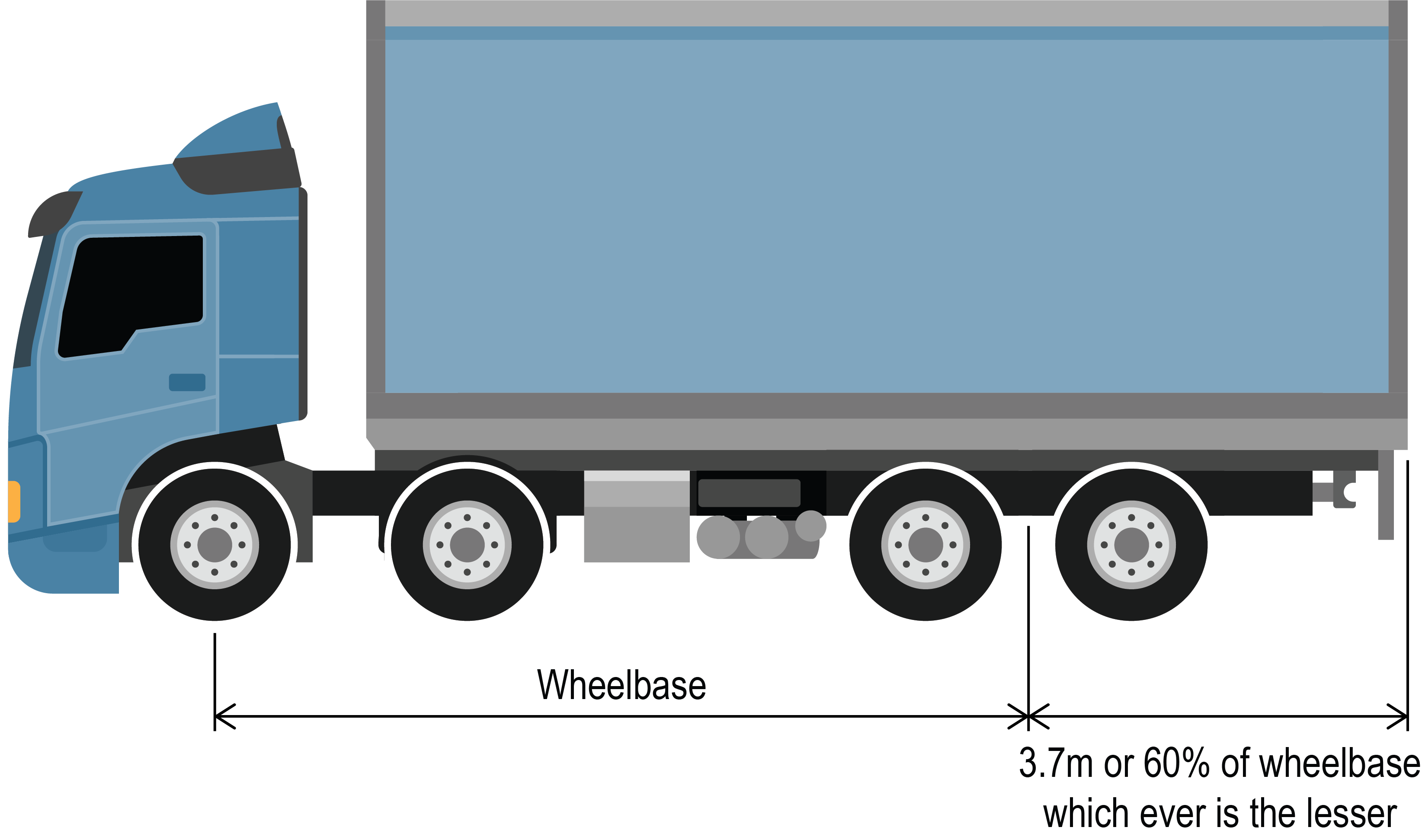
Rear overhang on semitrailers, dog trailers and tag trailers – Lesser of 3.7m or 60% of 'S' dimension
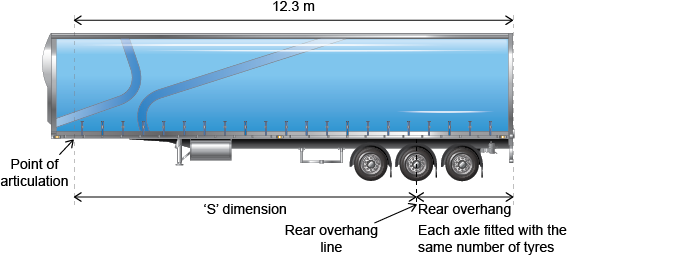
Rear overhang on a pig trailer – Lesser of 3.7m or the length of the load-carrying area forward of the rear overhang line
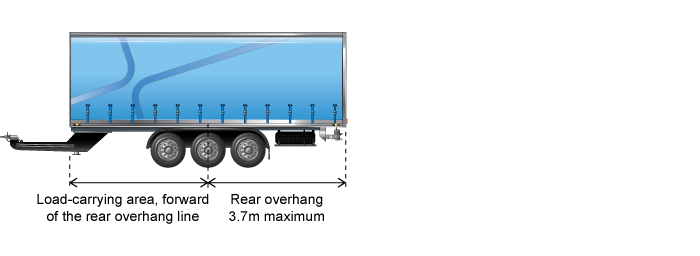
Rear overhang on other vehicles, such as a bus – Lesser of 3.7m or 60% of the wheelbase
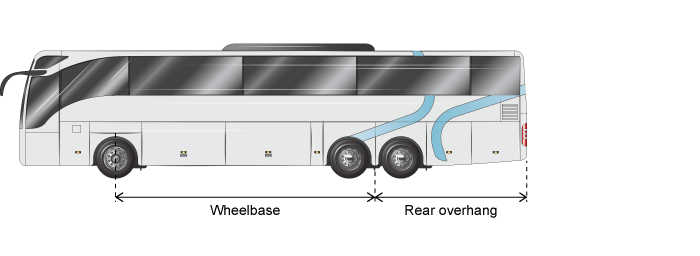
Rear overhang on a vehicle carrier - no more than 4.9m
The distance measured at right angles between the rear overhang line of a trailer carrying vehicles on more than one deck and the rear of the rearmost vehicle on the trailer must not exceed 4.9 metres.

Vehicles fitted with retractable axles
For vehicles fitted with retractable axles, rear overhang requirements must be met in retracted and unretracted positions.
Vehicles being towed
A rigid vehicle fitted with a flat-bed tilt tray body, which is towing a vehicle via its rear-mounted wheel lift, is considered a heavy vehicle combination for the purposes of assessing dimensional compliance.
Hence, the vehicle being towed is regarded as a ‘vehicle’, rather than a ‘load’, when its front/rear wheels are secured in the wheel lift, and the other wheels are in contact with the road (either directly or via lifting dollies, in cases where the wheels are inoperable). This means that the applicable length limit for that combination is 19 metres, not 12.5 metres.
The rear overhang limit for rigid towing vehicles does not apply to the rear-mounted wheel lift when being used to tow, as in that configuration, the structure of the lifting device is regarded as a drawbar.
In all instances, the towing vehicle and the towed vehicle must comply with all other relevant Heavy Vehicle National Laws, requirements for towing, and any other applicable regulations.
Measuring your rear overhang
The following pictures show where you should measure your rear overhang, based on different axle groups and the number of tyres. They are examples, and other variations may apply.
| Example | Axle type | Rear overhang line |
|---|---|---|
2-axle rigid truck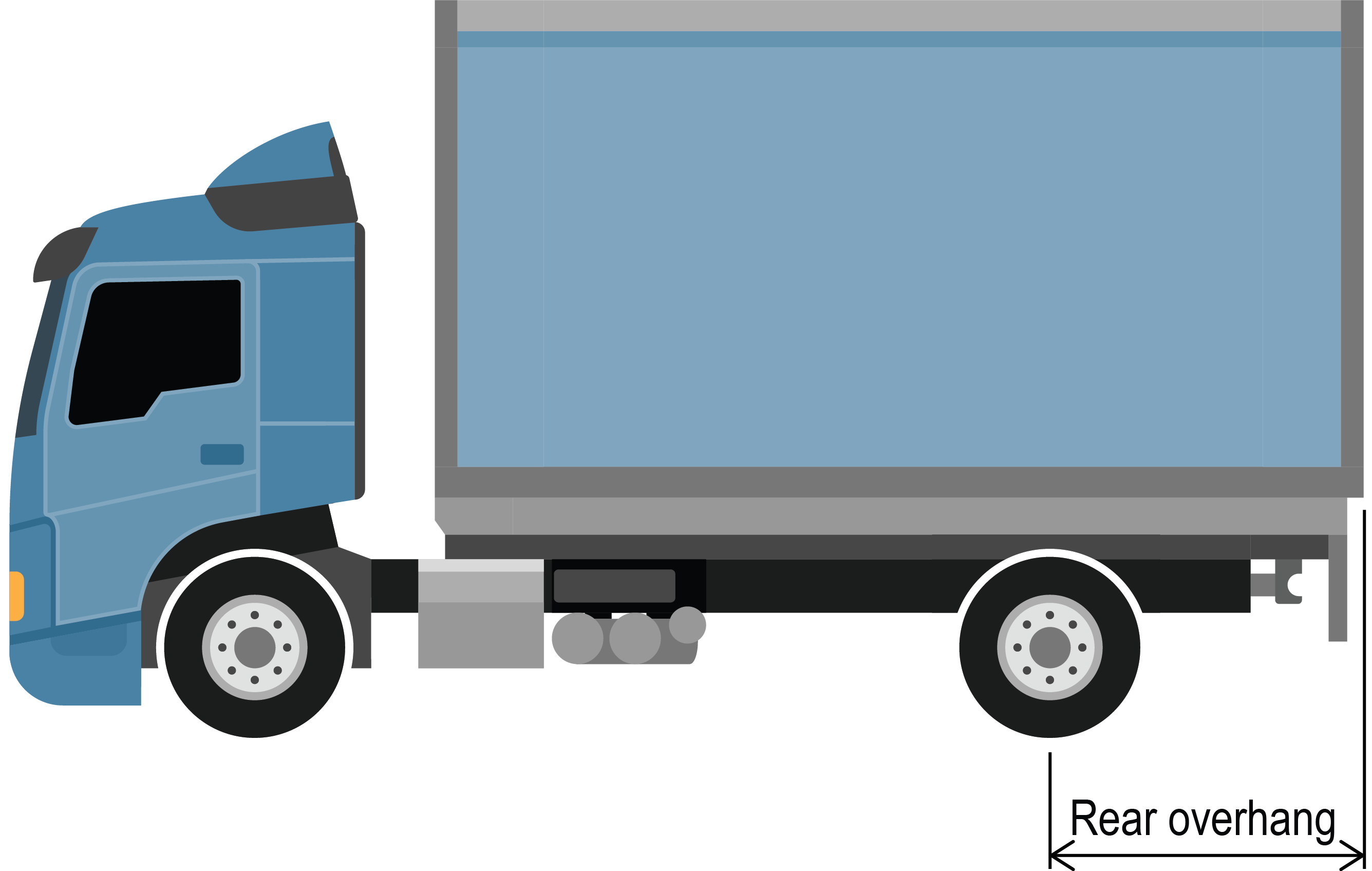 |
Rear axle group has 1 axle | Centerline of that axle |
3-axle controlled axle bus 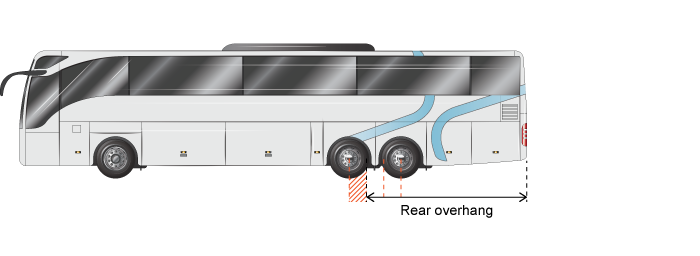 |
Rear axle group where the:
|
1/3 of axle spacing closer to the axle with 4 tyres |
4-axle low loader 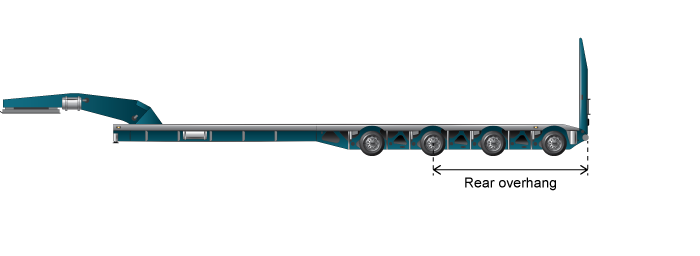 |
Last axle is steerable | Centre of the second axle, as the steerable axle is disregarded |
6-axle platform trailer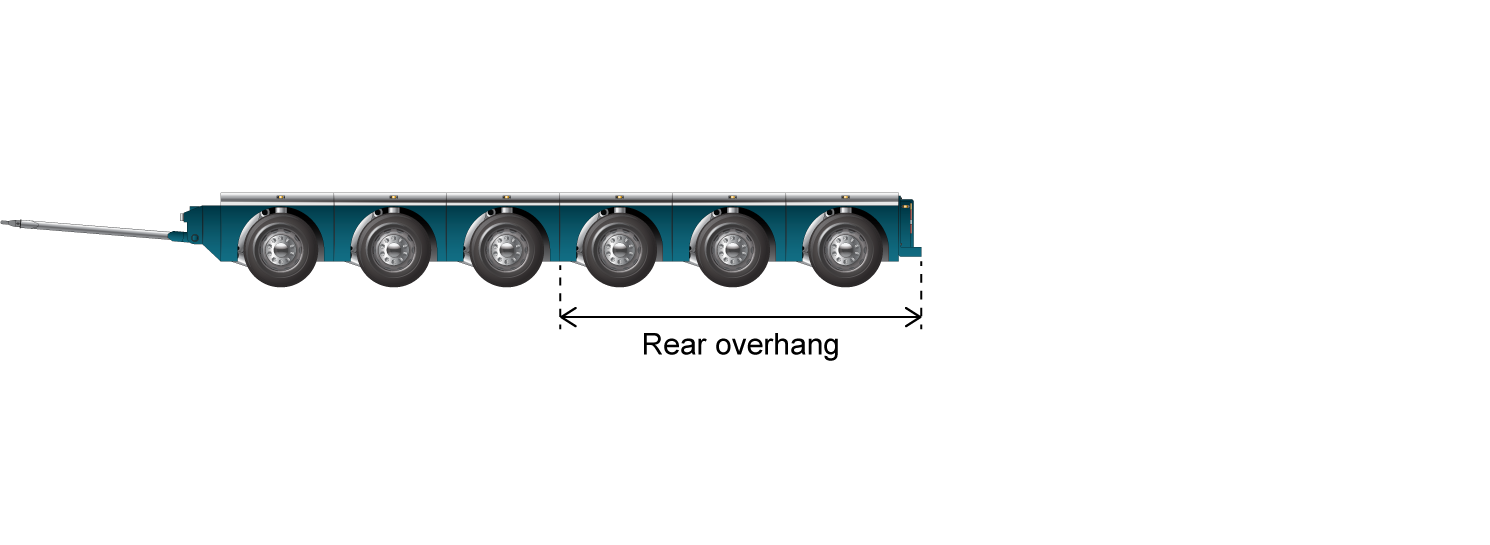 |
All steerable | Centre of axle group |
3-axle controlled axle bus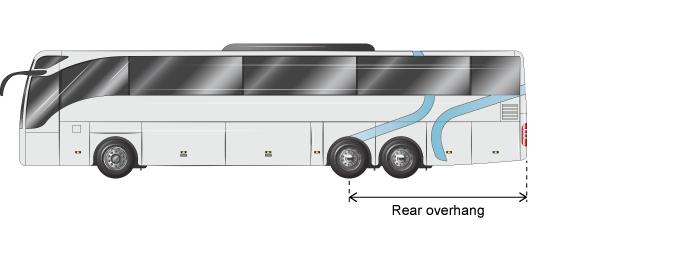 |
Last axle is steerable | Centre of the first axle in the rear axle group |
4-axle dog trailer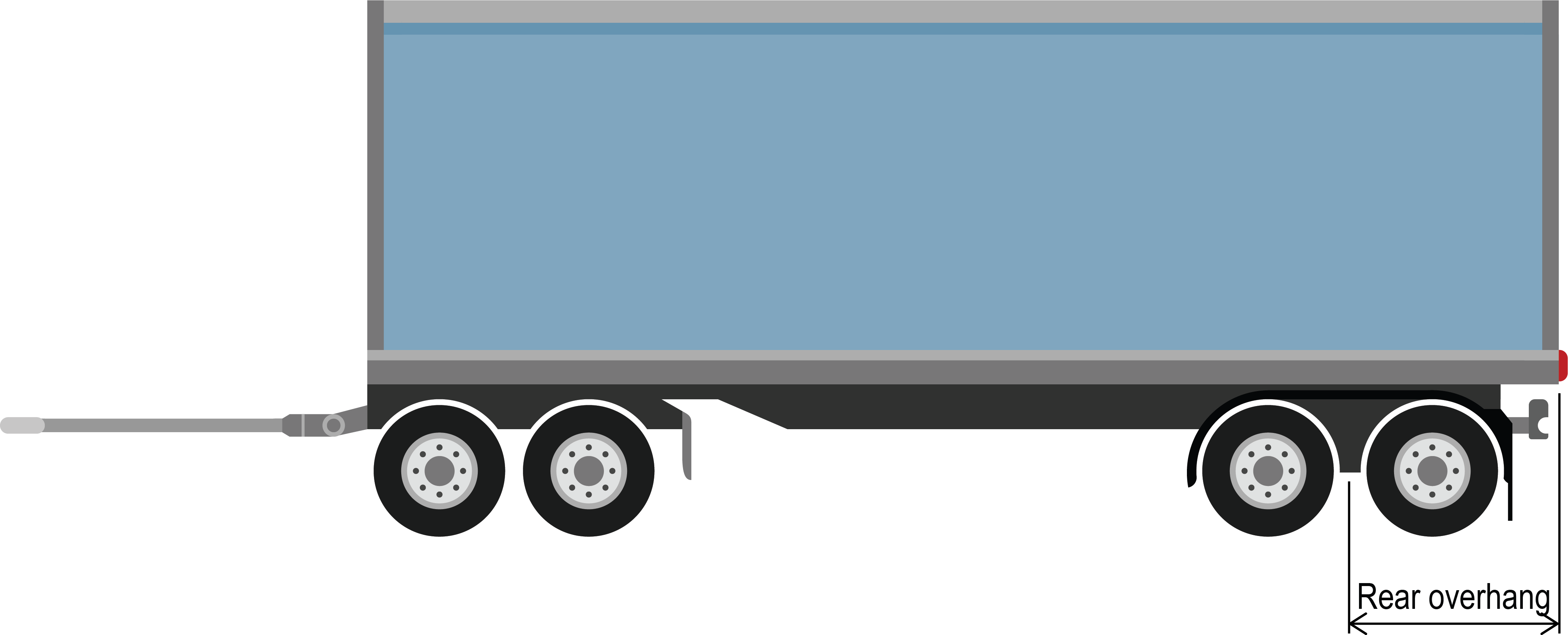 |
Rear axle group fitted with dual tyres on each axle | Centre of the last axle group |
Rear overhang exemptions
Some notices and permits exempt a vehicle from the length requirement for rear overhang in the MDL Regulation. If you are operating under relevant notices, additional rear overhang limits may apply.
More information and a full list of applicable notices and schemes can be found at Notices and permit-based schemes.
Front and side projection
A load on a heavy vehicle must not project—
- for a heavy vehicle consisting of only a motor vehicle—
- more than 1.2m in front of the motor vehicle’s headlights; or
- more than 150mm past the outer extremity of the motor vehicle on either side; or
- for a heavy vehicle consisting of a motor vehicle and 1 or more trailers—
- more than 1.2m in front of the motor vehicle’s headlights; or
- more than 150mm past the outer extremity on either the motor vehicle or the trailers on either side.

Despite the allowable projections, a vehicle and the load it carries must not exceed the length, width or rear overhang limit.

 Accessibility tools
Accessibility tools

